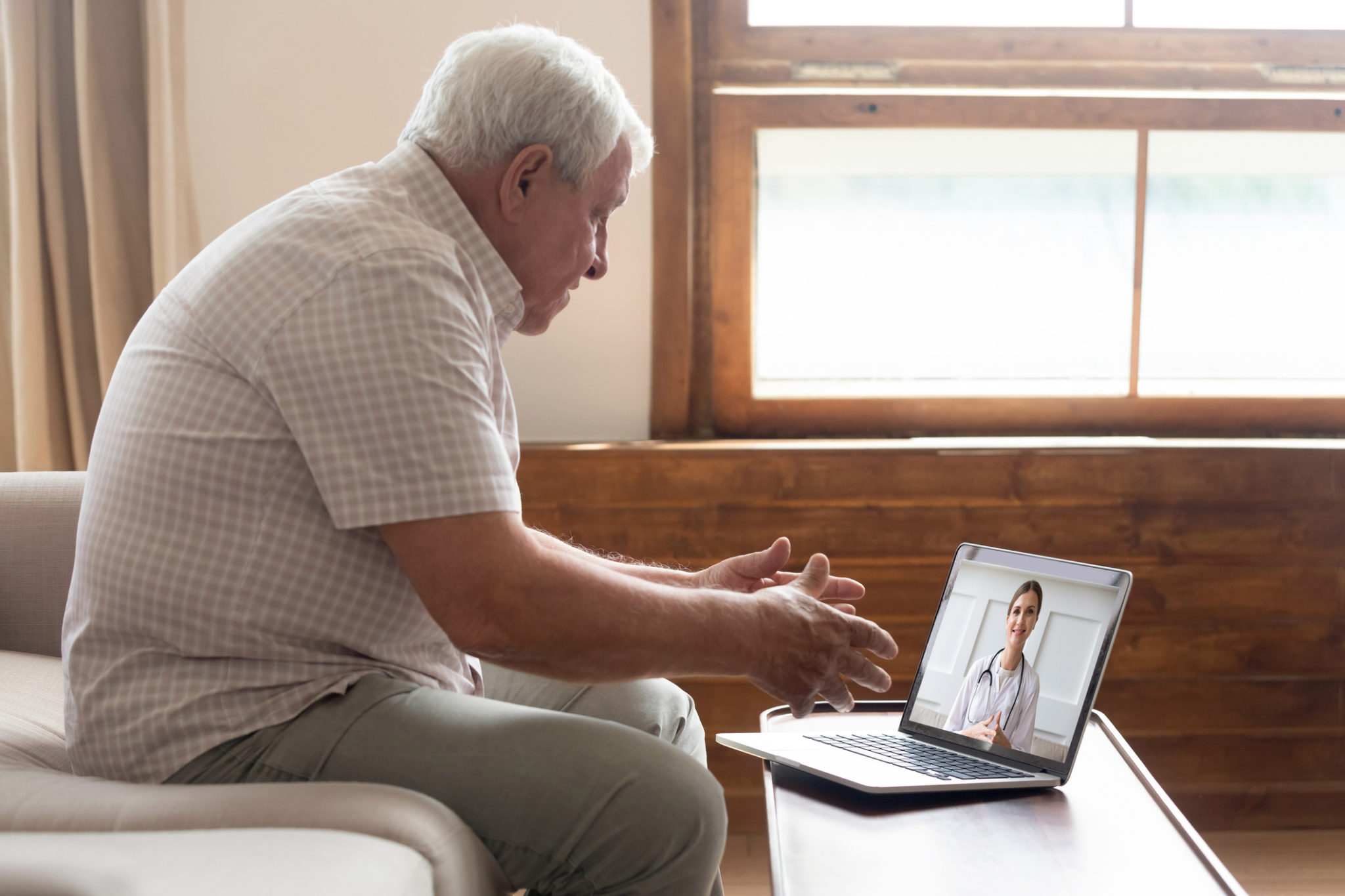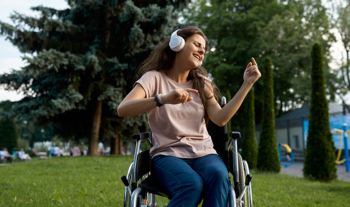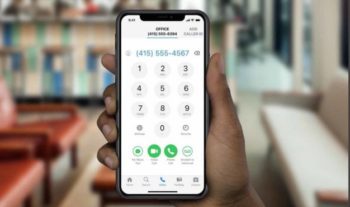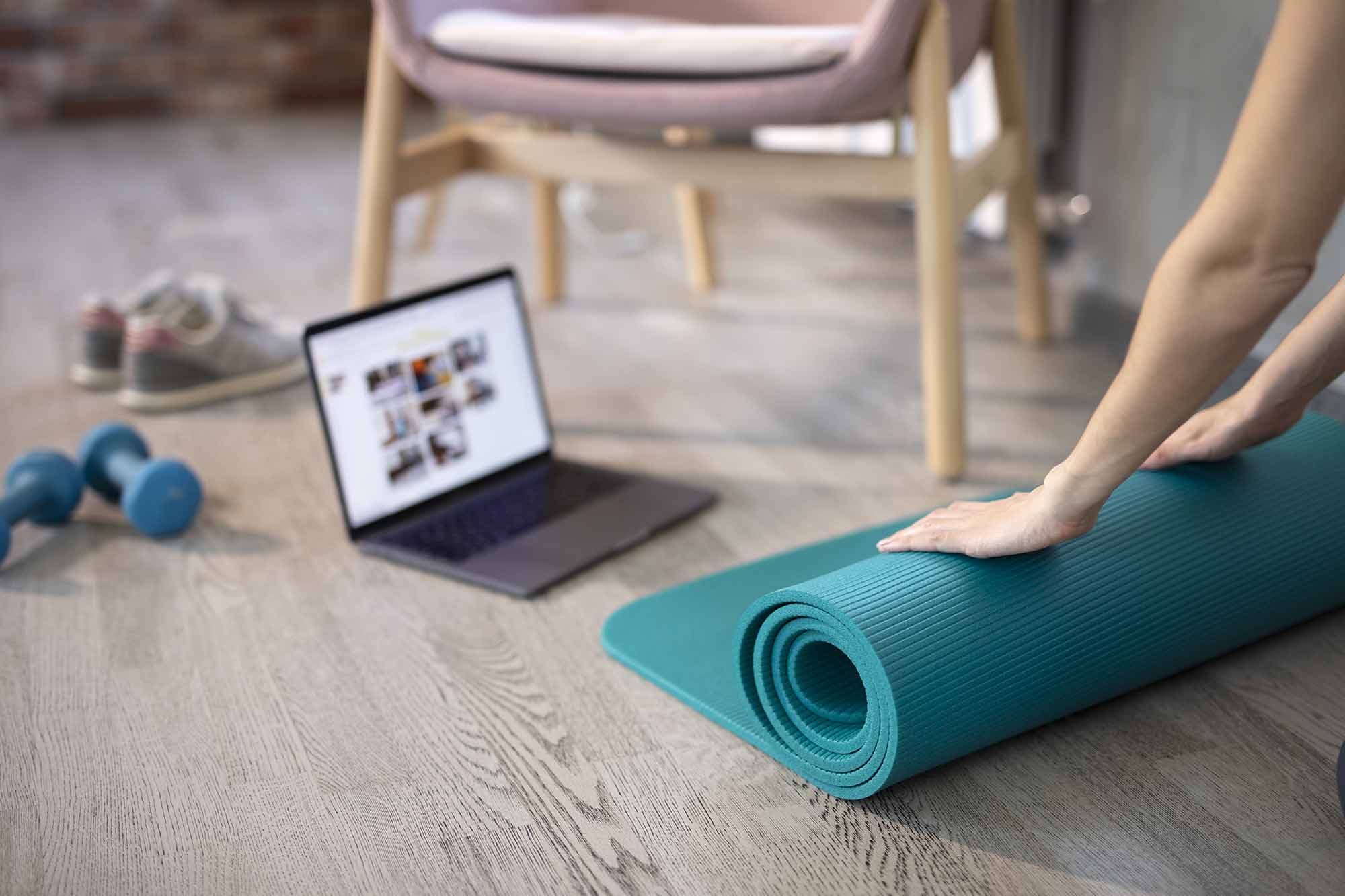Telehealth has exploded because of the pandemic. It was driven, in part, by the lockdown and people’s fear of going to a medical facility. And, it was fueled by a loosening of Federal regulations and an increase in reimbursement. I wanted a comprehensive telehealth update, so who better to talk to than Joe Kvedar, M.D., the President of the ATA.
Dr. Kvedar is a professor of dermatology at Harvard Medical School. He is also the co-chair of the AMA’s Digital Medicine Payment Advisory Group and editor-in-chief of npj Digital Medicine, which is in the prestigious Nature Research Group.
I had the pleasure of interviewing him on 9/8/20 for my American Journal of Managed Care podcast. The transcript of the interview that follows has been edited for length and readability.
The explosion of telehealth
PS: I thought I’d start by having you tell us in general terms: what’s been going on with telehealth since the pandemic? Talk about the remarkable increase in telehealth use.
***
Important resource: Resources to Help You Get Out (and Protect) the Vote
***
JK: It’s literally been an explosion, at least in the beginning. We can talk about the leveling off, too. I’m sure that’s of interest. There were two things that happened:
- We successfully brought the doctor’s office into your living room. It was really the only way we could deliver non-emergent care. I’m happy to say patients took to it, and doctors took to it as well.
- We made telehealth a household word. I’m almost 30 years into the journey, and, for me, that was an amazing thing, too.
Fundamentally, we’ve changed the landscape of how we view care delivery. However, there are still some issues to deal with:
- We need to determine the right percentage of care delivered by telehealth.
- We also need to see how the reimbursement/ regulatory perspective will sort out going forward.
But the good news is that people know what telehealth is now. They have had good experiences with it. And they want to do more.
Regulatory changes facilitated the explosion of telehealth.
PS: Can you give us an update on the temporary regulatory changes that facilitated this explosion. What you think are the most important regulatory changes that made this possible? And what happens when they expire.
JK: They really fall into three areas.
- Reimbursement
- Technology or HIPAA-related
- Licensure.
We’re still in a public health emergency. At the end of July, the government extended the regulatory changes for another 90 days, which puts us into October. So for now, all of these things are staying in play for healthcare delivery.
-
Reimbursement
Reimbursement is probably is the most influential and wide open of the regulatory changes. In mid-March, Medicare declared, as part of the public health emergency, that they would pay for all telehealth interactions, which includes,
-
-
- video
- audio-only
- remote monitoring
- asynchronous
-
All of these ways for you to communicate with your doctor using technology are now compensated by Medicare and Medicaid.
Of course, most states are still in some sort of public health emergency scenario as well, with executive orders demanding that health plans pay for these things as well. So the reimbursement landscape, we think, is very fertile.
We’re just getting those claims back now. so we can see if what they said they would pay for, they are actually paying for. It’s happening in real-time, but it seems very encouraging.
The last thing I’ll say on reimbursement is that the Centers for Medicare and Medicare Services (CMS) director is a woman named Seema Verma. She is the most telehealth-friendly administrator we’ve ever had in that position. She has said multiple times – and this is a quote:
“The genie is out, and it’s not going back in the bottle.”
So I think we have a lot of positivity there. And I hope we can ride that to something that makes a great deal of sense for our patients.
-
Technology and HIPAA
The use of technology and HIPAA compliance is another important area of regulatory change. Clinicians were told they could use FaceTime, Google Hangouts, Skype, any platform they wanted.
What made that possible was the government saying they wouldn’t prosecute people for not having a HIPAA arrangement with their technology vendor. This was fundamental to allowing us to do that.
We all suspect that that will change, however. It’s too chaotic. There’s too much patient risk of something happening when you have such a chaotic IT landscape.
And sure enough, a lot of those companies are now preparing themselves to sign HIPAA agreements with clinicians.
So they continue to offer these services, and that just means they’re becoming compliant with all the privacy and security retirements.
So we will have a broad range of technologies. I don’t know how broad or whether it will include all of them. But it will be better than it was before.
-
Licensure
Right now, 49 out of 50 states have eased licensure requirements so clinicians can practice across state lines effectively. That’s a big deal. I think of all of these regulatory changes, this is the one that’s the least clear on what the outcome is going to be.
It’s governed at the state level by the state medical boards, and that’s 50 different organizations. What they have in common is that they all view their state as their fiefdom.
And, of course they want to protect their providers. Yes, they do make sure that we’re licensed and credentialed and all that stuff. And that’s important. But they are also very much protecting the economic position of those providers in that state.
It’s not clear how this will end up. Maybe we’ll have regional agreements between states. For instance, in my case, perhaps we’ll have a regional licensure agreement with New England states – New York, New Jersey – something like that. But that regulatory issue is the least clear of the three.
In summary, regulatory restrictions on all of those things were relaxed. And, I think they won’t all go back to where they were before. I believe there will be some easy path for us to continue to treat our patients using this care delivery method.
Breakthroughs in telehealth technology
PS: We’ve come a long way since the time, years ago, when American Well (now AmWell) first hit the scene. Can you describe what breakthroughs in technology have made it easier for doctors and patients to participate in virtual visits? And what is holding us back?
JK: Thanks, that’s a wonderful question. I think on the plus side, smart devices, wireless bandwidth, 4G, maybe 5G coming – we’ll see how that works – have been really pivotal. If you think back to the days before, we had not just the iPhone itself, but that user interface that’s so powerful and now extends to all the Google portfolio as well.
It’s easy now. You push on something with your finger, and things happen. All those gestures, all those things that made it easy to work with, touch-sensitive devices, all of that was paving the way.
Now so many people Skype or FaceTime with loved ones. They’re totally comfortable with video technology as a way to communicate. Therefore, when a doctor says, “I think we have to do this by video,” it’s not a shock. Instead, it’s like, “Oh, maybe that makes sense. I just talked to my grandchildren.”
What’s happening in telehealth is like so many other stories that involve tech. Uber is a great example. You had to have GPS and mobile and some other things to make it work. When it finally came together in a service, people said, “Oh my God, why didn’t we do that before?”
What’s left to do?
There are several important things left to do:
1. Bandwidth
Sadly, bandwidth is not universal, sadly. ATA advocates for universal broadband as a utility. Not to be overdramatic, but it should be a human right to have broadband. That, of course, extends not just to rural areas but to urban areas where that’s a problem as well.
2. Affordability
Unfortunately, not everyone can afford a smart device. That’s probably the biggest challenge, this whole notion of disparities.
Right now Medicare and most private payers pay for audio-only. We can do a lot with audio-only. And it is a way for us to cross the digital divide.
That’s important, but we do need access to better bandwidth and devices for everyone.
3. Consumer-level ease of use
I spoke earlier about how intuitive the touch interface is. But, when you start to add in things like remote monitoring devices and Bluetooth, it starts to get really complicated for people very quickly.
One of the things we’ve learned over the years is that when patients act as consumers, they expect consumer-level ease of use. Healthcare hasn’t crossed that bridge yet. – in really all aspects. Making it easier for our patients to interact with us via telehealth is still required.
PS: I’m glad you brought up audio-only because a lot of people think that when they hear the word“telehealth,” that it has to be video. I’m a Kaiser Permanente member. I remember the first time they said to me, “Oh, the specialist will give you a phone call.” I said, “What? She’s not going to see me?” After I thought about it, I realized that there was really no reason to see me in person for that particular problem. The telephonic visit worked really well.
Telehealth tools for consumers
PS: Since you brought up remote monitoring making things more difficult, what do you think about the technologies that allow telehealth visits to go beyond just a conversation?
For example, you could send the patient a package of digital devices such as a stethoscope, maybe the Kardia EKG device, who knows? Are these add-ons going to make it more complicated? Or will they expand the ability of doctors to do more via telehealth?
JK: That’s a wonderful conversation to have. We are in this phase now where everyone’s going back and saying, “Now that I can see people in the office, what should I be doing by telehealth?”
The answer is if you have the information that you need to make a diagnosis or change a care plan and you don’t need to touch the patient, then you can do it by telehealth. But you’re right; audio or video-only has limitations if you don’t have other data points.
There are three kinds of tools that I think are going to blossom over the next few years. Each one of them will do exactly what you said. That is, to make the video or audio interaction much more powerful. This is because you’re giving the doctor more data points to help make a decision about your care.
1. Home devices
There are a number of home devices on the market for use with telehealth. TytoCare is an example, but there are others.
A lot of times, these devices can do everything from taking your temperature to look in your throat to look in your ears to take your heart rate and EKG – all in one, easy-to-use tool. That’s really appealing.
The challenge is, how do we get it into your hands so that when you need it, you have it? It’s one thing to say, “We’ll send you a package.” But if it’s 10:00 at night and I’ve got a sore throat, I want to be seen now. I don’t want to wait for a package.
PS: Health Plans could send one to everybody when they sign up for their health insurance.
JK: Yeah, something like that. When I was a kid, we had a mercury thermometer in the medicine cabinet. But at some point in history, that became a thing and everyone had to have one. We need to figure out how to do that with these devices.
2. Digital biomarkers
JK: One innovation that I’m excited about is digital biomarkers. There are a number of companies that are using the signals that come off of your mobile device to learn more about you.
One that I’m an advisor to is an Australian firm called ResApp. Based on the sound of your cough, they can diagnose pneumonia, bronchitis, asthma, and so forth.
Picture this: you’re sick and call the doctor with your video. At the start of the interview, you begin coughing. The clinician doesn’t need to listen to your lungs to make a diagnosis. They have enough data from the app.
Digital biomarkers are also being used for depression and a number of other indications.
3. Home testing
One thing that diminishes telehealth value is the need for a test to make a diagnosis. For example, say that I see a patient with a sore throat and I think it could be strep. Now, the patient has to go somewhere to get a strep test.
A patient like that will probably think, “Why did I bother to do it virtually? I could’ve gone to urgent care and got it all done.”
We need do things that are analogous to the way home pregnancy testing is done. I always remind people that when my mom conceived me, she had to have a rabbit killed to learn she was pregnant. Now, you can do a pregnancy test in the privacy of your own bathroom.
The more stuff we can do like that – and there are companies that are moving in that direction – the more powerful telehealth will be.
Pros and cons of different models of different telehealth companies
PS: Now, I want to ask you a question that I wonder about: what are the pros and cons of the different models of telehealth companies? Some of these companies have their own doctors. So when you call up, you talk to a doctor, but it’s not your doctor.
Others, such as Doximity’s Dialer video, make it really easy even for the most Luddite of doctors to be able to quickly and easily have a HIPAA-compliant call with their patient. What do you think? Is there a role for both? Is one better than the other?
JK: These are all wonderful questions to dissect. Members of Health Plans, as you know, are not all patients. Some of them are well people who want to be insured.
Those people, for the most part, felt like they should have a telehealth option. So Health Plans decided they should offer this as part of their benefits package. Employers did the same.
We as doctors were sort of, “Well, I’m not so sure. Maybe that’s not a good idea. I’ve got to study it. How about if we publish some more papers? Maybe there’s not enough data.”
Related Content: Telehealth Project to Help Atrial Fibrillation Patients During COVID Crisis
People got tired of asking doctors for telehealth.
People got worn out asking us for telehealth, so they just formed these companies (the Teladocs, the AmWells, full-service providers). They’ll get a doctor network in 50 states, thank you very much. If you have the sniffles at 9:00 at night, call Blue Cross and Blue Shield of Massachusetts. You’ll be connected to a doctor and get your care done.
Now that almost every doctor has participated and is offering it, I think it’s a new ballgame. So to answer your question, it’s always better if your own clinician can take care of you. They know you, they have your records. But it’s also good to get cared for.
In the old days, I used to say the problem with those solutions was that they were siloed. You might get your earache taken care of by a Teladoc doctor, and your own physician would never know about it.
Maybe you get on an antibiotic, something else happens, you get prescribed something that interacts with it, and you get in trouble. As a HIT enthusiast, you know how important interoperability is.
Nowadays, however, I think the game has changed. Doctors are offering these services to their patients.
In my opinion, more and more times the best option will be for you to go through your own doctor or doctor’s practice to get this service delivered. And, not so much through the siloed services that we saw in the past.
PS: That’s interesting. That’s my bias as well. I like to think, as I have for other forms of rapid delivery, (e.g., urgent care, Minute Clinics, and so forth) that the types of illnesses that are most amenable to being provided in that way are what I call “grandma illnesses”. In the past, before we could easily access to a doctor, we used to go to our grandmothers to get care. And that was ok because you were going to get better regardless.
Big Telehealth
PS: Some companies have been winners during the pandemic. The most obvious one that comes to mind is Zoom. It’s a real winner. But Teladoc has also done really well. And, now, with the recent high-profile acquisition of Livongo, they are now going to be “Big Telehealth.”
My question to you is: will Big Telehealth dominate the same way as big tech (e.g., Facebook and Amazon). Will they squeeze out the little guy and diminish competition? Should we be worried about this?
JK: In the near term, I don’t think so because there’s still enough innovation that is needed. There will be a robust startup economy and a robust venture investment portfolio that will move this needle forward.
As I said earlier, yes, we brought the doctor’s office into your living room. But that’s quite a limited view of healthcare. The idea of having it completely digitized, having your service offerings sometimes involve a person, sometimes involve a chatbot, sometimes involve remote monitoring technologies, having it all integrated – there’s a lot to be done there.
Teladoc
I admire the folks at Teladoc; I always have admired them for having grown that business the way they have. They’ve provided a model for all of us to aspire to in terms of growing telehealth.
So this is not about criticizing them at all. Rather, just to say that the bigger they get and the more they go after a certain focused sector, there will be plenty of people around them that chip away at the disruptions.
I think, perhaps in ten years, perhaps we may see big telehealth dominating in the way Microsoft and Google and Facebook dominate now. But we’ve still got a ways to go before we get there.
What keeps you up at night?
PS: I want to close with this. You’ve been in the telehealth space for a very long time. What I wanted to have you share with us is: what keeps you up at night when you think about the future of telehealth?
JK: I don’t think anything keeps me up, but I know exactly what you’re asking about. Here are a few things that I worry about:
1. We need to determine who and who should not be seen via telehealth
Each physician organization, whether it be specialty, society, or practice, needs to decide what they’re able to do with this delivery mechanism. They need to decide what types of problems need to be seen in the office and just stick to it.
We recently had a situation where we couldn’t see people in the office. So we said, “We’ll do everything virtually.” That’s not any more healthy than doing everything in the office. We need to sort that one out.
Related Content: Why Telemedicine IS the Future of Healthcare
2. Address Health Plans concerns about paying for duplicate services
We need to have some heart-to-heart conversations with our payer colleagues about duplicate services They worry about overpaying for things, about costs going up.
We owe it to them to have an honest dialogue about the value that telehealth can bring. And we need to put in place some safeguards so that we don’t end up seeing someone twice for the same thing.
For example, I had a patient two days ago who had a bleeding lesion on her hand. I did a televisit with her. But needed to see her in the office the next day. I split my bill between the evaluation via telehealth and the office procedure the next day.
I didn’t overbill. But someone else could have. We’ve got to make sure we don’t do that.
3. We have to make things easier for people
This holds true not just for telehealth, but healthcare at large. And, it is particularly true when it comes to telehealth and digital health technology.
A lot of what exists in the industry is designed by engineers for engineers. It’s just not simple enough for people. People get tired of it and they move on.
It’s your health we’re talking about. If you get frustrated with a Bluetooth earpiece and don’t want to use it, you will put your phone up to your ear. But if you get frustrated with your Bluetooth blood pressure cuff and don’t take your blood pressure. That’s a different matter. We need to own that.
Closing remarks
PS: Thank you for this wonderful and informative discussion. Do you have any last words?
JK: It’s been a real pleasure talking to you and members of the audience. Folks can learn more about the ATA and find a lot of resources on the American Telemedicine Association website. People should become members.
They can also find me – I have my own website these days – at joekvedar.com. People can email me.
Thank you for the opportunity to chat with you today.
Patricia Salber, MD, MBA
Website:
https://thedoctorweighsin.com
Patricia Salber, MD, MBA is the Founder. CEO, and Editor-in-Chief of The Doctor Weighs In (TDWI). Founded in 2005 as a single-author blog, it has evolved into a multi-authored, multi-media health information site with a global audience. She has worked hard to ensure that TDWI is a trusted resource for health information on a wide variety of health topics. Moreover, Dr. Salber is widely acknowledged as an important contributor to the health information space, including having been honored by LinkedIn as one of ten Top Voices in Healthcare in both 2017 and 2018.
Dr. Salber has a long list of peer-reviewed publications as well as publications in trade and popular press. She has published two books, the latest being “Connected Health: Improving Care, Safety, and Efficiency with Wearables and IoT solutions. She has hosted podcasts and video interviews with many well-known healthcare experts and innovators. Spreading the word about health and healthcare innovation is her passion.
She attended the University of California Berkeley for her undergraduate and graduate studies and UC San Francisco for medical school, internal medicine residency, and endocrine fellowship. She also completed a Pew Fellowship in Health Policy at the affiliated Institute for Health Policy Studies. She earned an MBA with a health focus at the University of California Irvine.
She joined Kaiser Permanente (KP)where she practiced emergency medicine as a board-certified internist and emergency physician before moving into administration. She served as the first Physician Director for National Accounts at the Permanente Federation. And, also served as the lead on a dedicated Kaiser Permanente-General Motors team to help GM with its managed care strategy. GM was the largest private purchaser of healthcare in the world at that time. After leaving KP, she worked as a physician executive in a number of health plans, including serving as EVP and Chief Medical Officer at Universal American.
She consults and/or advises a wide variety of organizations including digital start-ups such as CliniOps, My Safety Nest, and Doctor Base (acquired). She currently consults with Duty First Consulting as well as Faegre, Drinker, Biddle, and Reath, LLP.
Pat serves on the Board of Trustees of MedShare, a global humanitarian organization. She chairs the organization’s Development Committee and she also chairs MedShare's Western Regional Council.
Dr. Salber is married and lives with her husband and dog in beautiful Marin County in California. She has three grown children and two granddaughters with whom she loves to travel.


















Comment will held for moderation